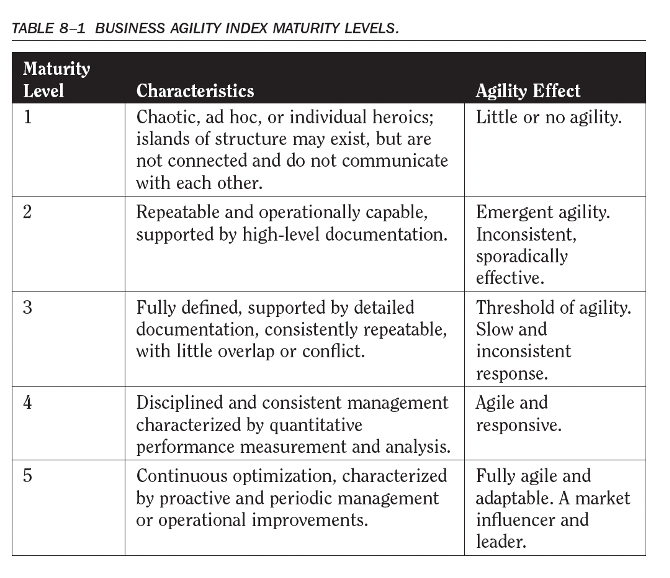Agility has become the new organization currency in the age of AI.
Agility, by definition, is an organization’s response to change and challenges driven by macro- and microeconomic conditions.
In 2006, working with a dozen leading academics and Fortune 100 executives, we defined ‘Organizational Agility’ in our book, Winning The 3-Legged Race, as:
“Agile organizations possess the processes and structures, or what we call ‘‘intangible assets,’’ that give them situational awareness into the macroeconomics and the competitive and operational trends inside and outside their four walls. They also have the management and technology mechanisms needed to act on that knowledge rapidly.
Success requires innovation in services and products. It also requires the continuous improvement of business processes within and across organizational boundaries. These two mandates are mirror images. Innovation of services and products cannot occur without well-defined and aligned processes; nor can business processes be improved without attention to changes in markets, and customer needs.”
BUSINESS AGILITY INDEX
In a follow-on study conducted by my team in 2010, publicly traded U.S. companies were examined across multiple industry groups, using a range of financial measures—including value, performance, growth, margin, capital efficiency, and stock price volatility—to measure the financial effect of business agility against a maturity scale (see Table 8–1, [Source: The Power of Convergence, Faisal Hoque, et al]).
This research confirmed the economic value and financial performance advantages of companies that practice Business Agility. The overall results show that companies with highly mature business agility characteristics—the Business Agility leaders—exhibited superior financial performance:
= 13 percent to 38 percent performance advantage in capital efficiency and value.
= 10 percent to 15 percent performance advantage in margin.
= Up to 5 percent performance advantage in revenue and earnings growth.
= Up to one-third less stock price volatility compared to non-agile publicly traded organizations.

Moreover, the study showed that the agility performance advantage was sustainable; these numbers reflect both the one-year view as well as a five-year view.
We called this the Business Agility Index.
Much of that theory and research not only remains relevant today, in the advent of AI, “agility” will be the defining advantage for any organization.
Business leaders often use the term ‘‘agility’’ to describe their business plans and strategic initiatives, but it is often little more than a word—and a fervent wish. Thriving under constant market pressure requires business leaders to identify, understand, and respond in real time to change and disruption.
Organizations must find new ways to compete by streamlining business processes to eliminate redundancy and costly exceptions, while creating higher value. Despite the fact that the cost of doing business continues to rise, agile companies are mastering cost containment by increasing their ability to respond and adapt to frequently changing market conditions.
On the other hand, we don’t have to look far for enterprises that have stumbled or disappeared because they lost their agility. Sun Microsystems, once the superstar of Silicon Valley, was sold to software giant Oracle at a near fire sale price because it hadbecome too fragmented in its products and failed to capture the imperative position among customers. And Newsweek, one of the more venerable weekly news and analysis magazines of the last century, was sold for $1.00 after having its value position eroded by new, Internet-based media.
Could these organizations have reinvented themselves to stave off disaster and collapse? Absolutely. It would have requiredrethinking their business models, making strategic investments in new technologies and markets, and taking a risk on immature ventures. Precipitating this change is situational awareness, or the ability to recognize change, opportunities, and competitive threats. But it takes more than recognition to act upon these changes. It takes agility and a willingness to respond.
AI FOR BUSINESS AGILITY
Agility has become the new organization currency in the age of AI because the rapid pace of technological advancement, market shifts, and evolving customer expectations demand organizations to be highly adaptive.
AI enhances organization agility by enabling rapid, data-driven decision-making, optimizing operations, and allowing organizations to adapt quickly to changing conditions. Here’s how:
- Predictive Analytics: AI provides real-time insights from vast data, allowing organizations to anticipate trends and make informed adjustments swiftly.
- Automation of Routine Tasks: Automating repetitive processes increases efficiency and frees up employees for higher-value work, improving overall responsiveness.
- Customer Personalization: AI tailors experiences to individual customer preferences, boosting satisfaction and enabling organizations to adapt to evolving customer needs.
- Supply Chain Optimization: AI forecasts demand, identifies potential disruptions, and recommends alternatives, making supply chains more flexible and resilient.
- Risk Management and Dynamic Workforce Allocation: AI assesses risks and supports flexible resource allocation, empowering organizations to pivot quickly in response to internal and external changes.
Together, these capabilities make organizations more agile, resilient, and responsive in a competitive, fast-paced market.
THE JOURNEY TOWARD AGILITY
Achieving agility is not exclusive to organizations of a certain size by revenue or industry sector but is available to all organizations. Further, our research finding specifies the behaviors and constructs that drive agility.
Those behaviors and constructs are defined as a repeatable management practice that can be implemented utilizing various management framework as we defined in our recent books, REINVENT and TRANSCEND.
Organizations discover profitable opportunities—new market spaces or gaps in existing market spaces—by considering:
- Signals regarding product/service, customer, technology, socio- economic, and cultural trends.
- Competitors’ current and future strategic positions.
- The organization’s internal competencies.
- The competencies it might gain through access to partners.
An organization’s initial position in the product market must then be regularly augmented such that it continues to offer a valueproposi- tion beyond those provided by competitors. Business and technology together play a critical role in establishing a strategic position or in sustaining it once established; failing to understand these roles across each of an organization’s product markets can—and often does—lead to inappropriate levels of business and technology investment.
An organization that has the ability to successfully negotiate its path through the ever-shifting competitive landscape has developed the talent to continuously transform itself as opportunities and threats appear. This organization maintains three characteristics:
- Ongoing assessment of activities, eliminating those that don’t serve the core business strategy.
- Continual refinement of activities for greater efficiency and productivity.
- Redirection of resources to new products, processes and business models.
Building an agile organization is not easy. Change must become a part of an enterprise’s fabric. Bringing in a persuasive leader might help the transformation, but it is the change management skills they bring to the table that will help make the journey a successful one.
More crucial to that success, however, is the need to incorporate new ways of doing business into the company’s management systems and business processes.
This means new organizational structures, the creation and sharing of new types of information, and establishment of new decision-making processes.
From my book TRANSCEND.
Adapted/published with permission from ‘TRANSCEND’ by Faisal Hoque (Post Hill Press, March 25, 2025). Copyright 20204, Faisal Hoque, All rights reserved.
Look for my latest book TRANSCEND available for pre-order now.















